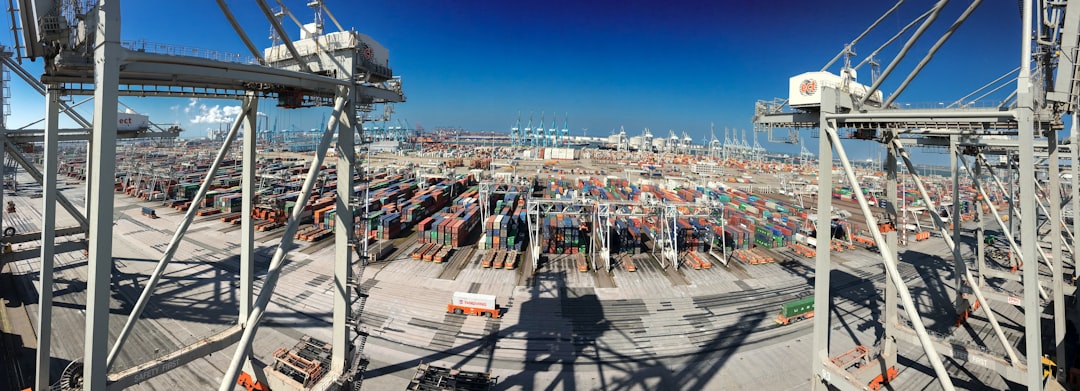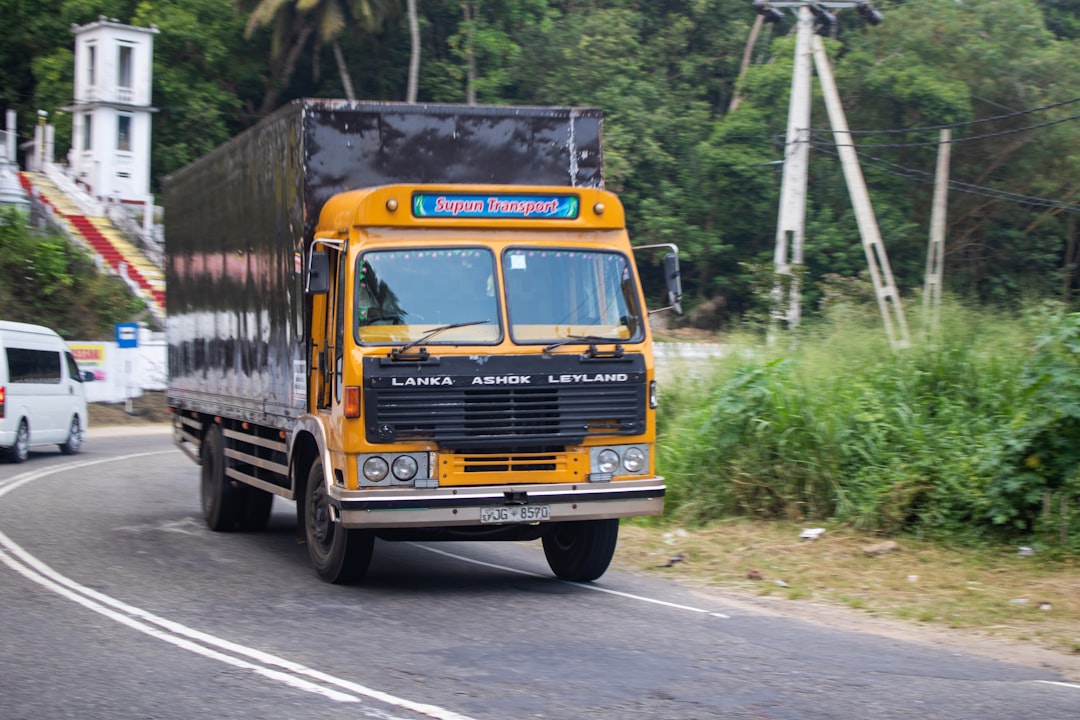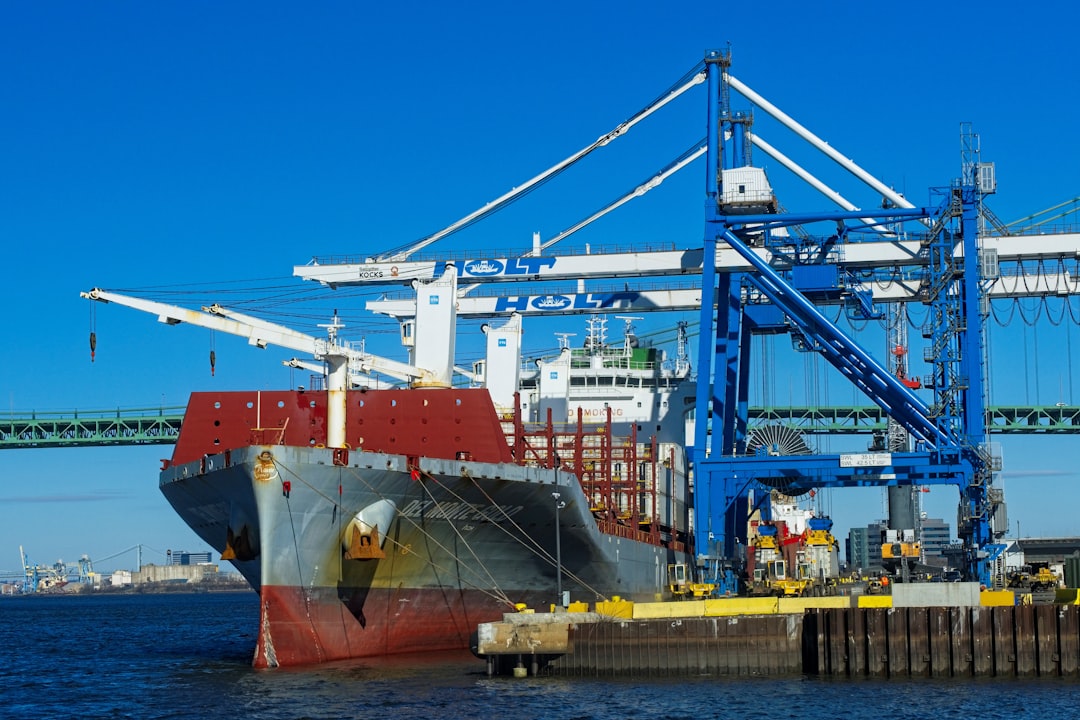

Engage prospects with a scan and streamline customer engagement with FREE QR code marketing tools by Sona – no strings attached!
Create a Free QR CodeFree consultation

No commitment

Engage prospects with a scan and streamline customer engagement with FREE QR code marketing tools by Sona – no strings attached!
Create a Free QR CodeFree consultation

No commitment
Today’s logistics and shipping environment demands that cargo container suppliers deliver greater efficiency, transparency, and seamless customer access to information. Quickly finding the right container specifications, tracking shipments, and comparing supplier offerings often determine whether a lead converts or moves to a faster competitor. Businesses clinging to outdated, analog processes, such as printed catalogs, paper forms, and phone-based inquiries, regularly experience missed opportunities and struggle to track customer journeys.
QR codes represent a transformative solution for cargo container suppliers to connect with customers and partners across every touchpoint. Integrated on containers, in catalogs, on signage, and embedded in invoices, these codes eliminate friction from traditional workflows. Buyers can instantly access container dimensions, verify real-time pricing, check product availability, and learn about modifications straight from their mobile devices, significantly closing gaps where prospects would otherwise be lost or remain invisible.
Strategically deploying QR codes streamlines research, automates lead qualification, and elevates after-sales support for cargo container suppliers. The outcome is more timely, transparent, and measurable buyer interactions with fewer lost deals. This guide details practical steps to implement QR code solutions and unlock growth, agility, and deeper customer insight throughout the supplier journey.

QR codes bridge the gap between physical touchpoints and actionable digital experiences, making it possible for cargo container suppliers to ensure no high-value prospect falls through the cracks. The traditional model, relying on delayed callbacks or manual handovers, often means interested buyers leave before their information is captured or priorities identified. By turning every physical touchpoint into a gateway to dynamic content, you upgrade passive materials into active lead sources that can be measured, optimized, and scaled. For strategy ideas, see QR codes in marketing.
This approach replaces slow, analog workflows with real-time visibility and engagement. Printed brochures become living catalogs, static signage turns into an interactive help desk, and paper forms are replaced by mobile-friendly flows that capture essential data with fewer errors. With a QR code platform like Sona QR’s product overview, you can also centralize link management, update destinations without reprinting, and pipe scan data directly into your CRM for immediate follow-up.
Example: Rather than hoping a potential buyer returns after browsing a printed inventory sheet, a QR-enabled spec label can point to an updated availability page that reflects live pricing, accessory options, and delivery timelines. Each scan also adds the visitor to your lead pipeline with the source, location, and asset scanned attached for context.

Cargo container suppliers operate amid complex buying committees, rapid price fluctuations, and distributed physical footprints such as yards, depots, and trade show booths. In this environment, delays and anonymous traffic translate into lost sales. Many interactions remain invisible due to manual processes that are not tracked or because there is no accessible path from print to digital action. The result is slower velocity, stale follow-ups, and missed personalization opportunities.
QR codes solve these gaps by translating physical engagement into digital intent data and streamlined workflows. A single scan can trigger an RFQ, open a maintenance request, load a WhatsApp conversation with a prefilled message, or deliver up-to-date compliance documentation. Because the experience is contactless and app-free, more prospects participate, and more interactions become measurable.
Imagine a logistics team comparing modified 40-foot high cubes at a busy trade show. Without QR-enabled signage, their engagement is invisible. With QR banners, each scan logs interest in specific models, routes the visitor to real-time stock and pricing, and alerts the appropriate rep to follow up while the conversation is still warm.

Effective container supplier strategies depend on serving the most relevant content immediately based on context. Static media breaks when pricing changes or when an interested buyer needs a configuration that is not in the brochure. QR codes provide a flexible, modular way to serve the right content and actions in real time while maintaining consistency and brand control.
Choose formats that map to common customer tasks in yard, showroom, or field environments. Dynamic QR codes are ideal for most placements in this industry since they accommodate content updates, campaign rotation, and analytics. Static codes work for evergreen materials such as basic safety instructions or standard facility Wi-Fi.
Dynamic QR codes elevate all of these formats with post-print flexibility. For instance, you can switch a code from an RFQ form to a limited-time promotion during a trade show, then back to inventory after the event. This agility protects print budgets while ensuring that your assets never go stale.

Growth stalls when suppliers miss buyers at peak intent. The challenge is not only to place QR codes everywhere but to place them where they eliminate friction and reveal demand signals that were previously invisible. Think about the physical journey: where do prospects linger, make decisions, or ask questions, and which of those moments create the most revenue risk or opportunity?
Mapping your funnel to physical spaces reveals high-impact placements. The goal is to connect every action to a digital destination that can be measured and improved, so future campaigns become more precise and effective. Over time, scan patterns highlight hot spots, such as a particular yard lane or an event booth corner, that consistently yield higher-value interactions.
Every placement should be chosen to collapse delay and uncertainty. By connecting scans to buyer stage, location, and asset type, you turn operational touchpoints into consistent lead flow and support signals.

Use cases should match how customers actually research, evaluate, purchase, and maintain containers. Think across the lifecycle, from awareness to negotiation and post-sale support. When QR experiences answer questions faster and reduce manual effort, you increase satisfaction while capturing better data for future outreach and forecasting.
Below are three foundational deployments that deliver fast value and scale across typical supplier environments.
These use cases lower manual workload for sales and operations while ensuring that every interested party becomes a visible, qualified lead. The act of scanning signals intent that can be nurtured via email, SMS, or ads with messaging that reflects the exact content accessed.
The true power of QR codes lies in turning scan activity into segmented audiences you can nurture and convert. Traditional advertising often spends heavily on cold traffic. QR codes, by contrast, capture context-rich signals from real-world interactions, which makes follow-up more precise and cost-efficient.
Start by designing unique QR codes for each touchpoint and journey stage. This creates automatic segments tied to the context of the scan. With a platform like Sona QR, you can sync these segments to your CRM and ad platforms, then trigger tailored flows or ads within minutes of the scan.
This approach enables you to prioritize high-intent prospects, reduce ad waste, and fine-tune lead scoring. Over time, your retargeting audiences become smarter and more profitable because they are based on real behavior rather than assumptions.
QR codes are the connective tissue across your offline and digital initiatives. They make print measurable, events actionable, and field operations visible. By treating each code as a capture point for both intent and identity, you can orchestrate cohesive buyer journeys that feel personal and timely.
To maximize impact, standardize QR code usage across your most common channels. Add consistent branding, clear calls to action, and destination experiences that are fast, mobile-friendly, and purpose-built. Then centralize performance data with a platform like Sona QR so you can optimize spend toward the placements that generate real pipeline.
QR codes serve as the offline onramp to your digital marketing engine, while unlocking a layer of attribution across channels that were once difficult to measure. With Sona QR, you can manage all codes in one place, monitor performance, and sync scan data with your CRM and ad platforms for a unified view of the buyer journey.
Launching a successful QR initiative requires structure: a clear goal, the right code type, thoughtful design, intentional placement, and rigorous measurement. Treat this as a repeatable operating procedure rather than a one-off experiment. The payoff is compounding performance as your team learns which placements, offers, and designs produce the strongest engagement.
Use the following steps to plan, launch, and optimize a QR campaign tailored to cargo container suppliers. Add time frames and owners for each step so your team can coordinate across marketing, sales, and operations. With Sona QR, you can centralize code creation, routing, analytics, and CRM integration so nothing falls through the cracks.
Connecting engagement to revenue is the central challenge in this sector. Traditional analytics often stop at clicks or visits, leaving a gap between offline interactions and pipeline outcomes. Without insight into who scanned what, where, and when, it is hard to prove contribution to sales or to know which placements to scale. For context, read Sona’s blog The Importance of Accurate Revenue Attribution.
Advanced QR analytics close that gap by capturing granular data from real-world interactions. This creates a more complete view of the buyer journey and provides a basis for continuous optimization. The result is better targeting today and better forecasting tomorrow.
With Sona QR and Sona, you can go beyond scan counts. Sona QR captures the essential engagement data. Sona.com connects scans to revenue using identity resolution, multi-touch attribution, and unified buyer journeys that join QR scans with website visits, ad clicks, email engagement, and CRM activity. This end-to-end visibility turns QR codes into a durable component of your performance marketing strategy.
Scaling QR code impact requires repeatable practices that fit the realities of yards, depots, and trade shows. The best results come from unique codes per asset, consistent calls to action, and a tight feedback loop between scan data and follow-up workflows. Educating staff to point customers to QR-enabled self-service also reduces bottlenecks at busy locations.
Choose the tactics that match your primary use cases and tools. If you rely heavily on catalogs and invoices, focus on personalized links and billing flows. If events are central, invest in large, well-lit QR banners, quick RFQ forms, and instant meeting scheduling.
Creative deployment examples include QR codes on equipment rental contracts that open a maintenance checklist, or on invoices that start a renewal flow with prefilled customer details. In both cases, scanners skip friction, and your systems capture valuable signals for timely outreach.
Cargo container suppliers are under mounting pressure to move faster, surface hidden revenue sources, and offer frictionless experiences at every stage of the customer lifecycle. The buying journey is complex, and traditional workflows often result in missed leads, anonymous engagement, and partial data capture. QR codes provide a practical, adaptable path to transform these gaps into high-value touchpoints that generate timely engagement and measurable pipeline.
Integrating QR code solutions across containers, catalogs, signage, invoices, and events creates a connected fabric of interactions that your teams can see and act on. With Sona QR for code creation, routing, and analytics, and Sona.com for attribution and buyer journey unification, you can turn each scan into a signal for growth. Treat QR codes as a core strategy rather than a one-off tactic, and you will capture demand at the source, convert it into measurable results, and build resilience in a fast-paced, competitive industry.
QR codes have transformed the cargo container suppliers industry by turning static information into dynamic, actionable insights. Whether it’s streamlining container tracking, enhancing client transparency, or enabling instant access to shipment details, QR codes replace cumbersome paperwork with seamless mobile-friendly interactions that improve operational efficiency and customer satisfaction. Imagine instantly providing your clients with real-time container status updates and maintenance records at their fingertips—boosting trust and accelerating decision-making.
With Sona QR, you can create dynamic, trackable QR codes tailored for your cargo operations in seconds. Update container data on the fly without reprinting labels, monitor scan activity to identify bottlenecks, and link every scan directly to your logistics workflow for smarter management. No more guessing or delays—just clear, measurable improvements in service and accountability.
Start for free with Sona QR today and transform every scan into enhanced access, stronger client relationships, and streamlined cargo operations.
Cargo container suppliers offer various types including standard, modified, and specialized containers such as 40-foot high cubes with options for customization like insulation or lockboxes.
Choose a supplier that provides real-time information access, uses efficient digital tools like QR codes for transparency, offers reliable tracking, and integrates customer interactions into CRM for seamless follow-up.
Consider the supplier's ability to provide up-to-date container specifications, real-time pricing, availability, digital engagement tools like QR codes, lead tracking, and after-sales support.
Ensure the supplier uses dynamic QR codes with real-time analytics, CRM integration, and automated follow-up processes to provide timely, transparent, and measurable buyer interactions.
The article does not specify average costs but emphasizes that real-time pricing and availability can be accessed instantly via QR code-enabled digital tools provided by suppliers.
Use Sona QR's trackable codes to improve customer acquisition and engagement today.
Create Your FREE Trackable QR Code in SecondsJoin results-focused teams combining Sona Platform automation with advanced Google Ads strategies to scale lead generation

Connect your existing CRM

Free Account Enrichment

No setup fees
No commitment required

Free consultation

Get a custom Google Ads roadmap for your business






Launch campaigns that generate qualified leads in 30 days or less.
